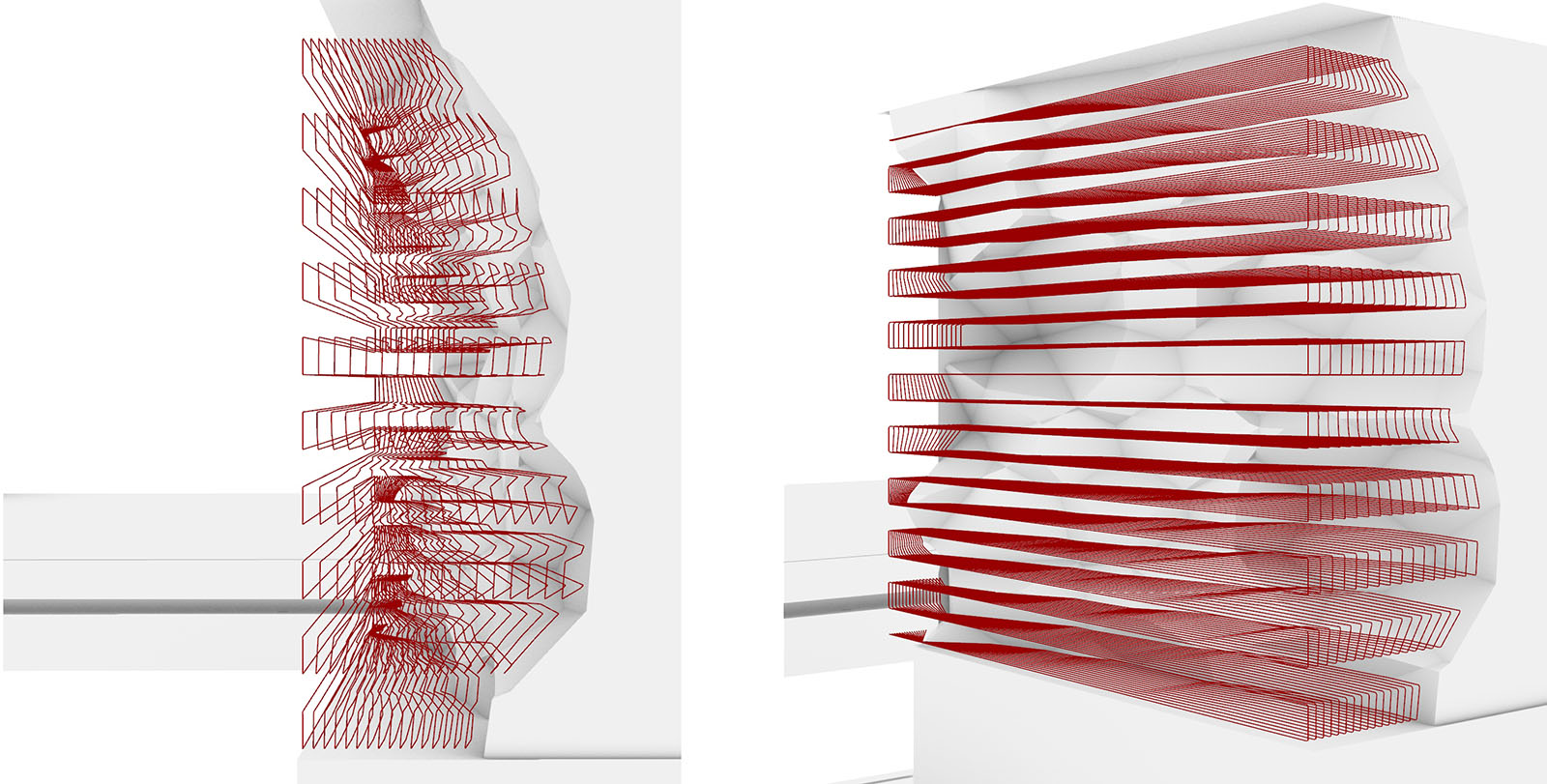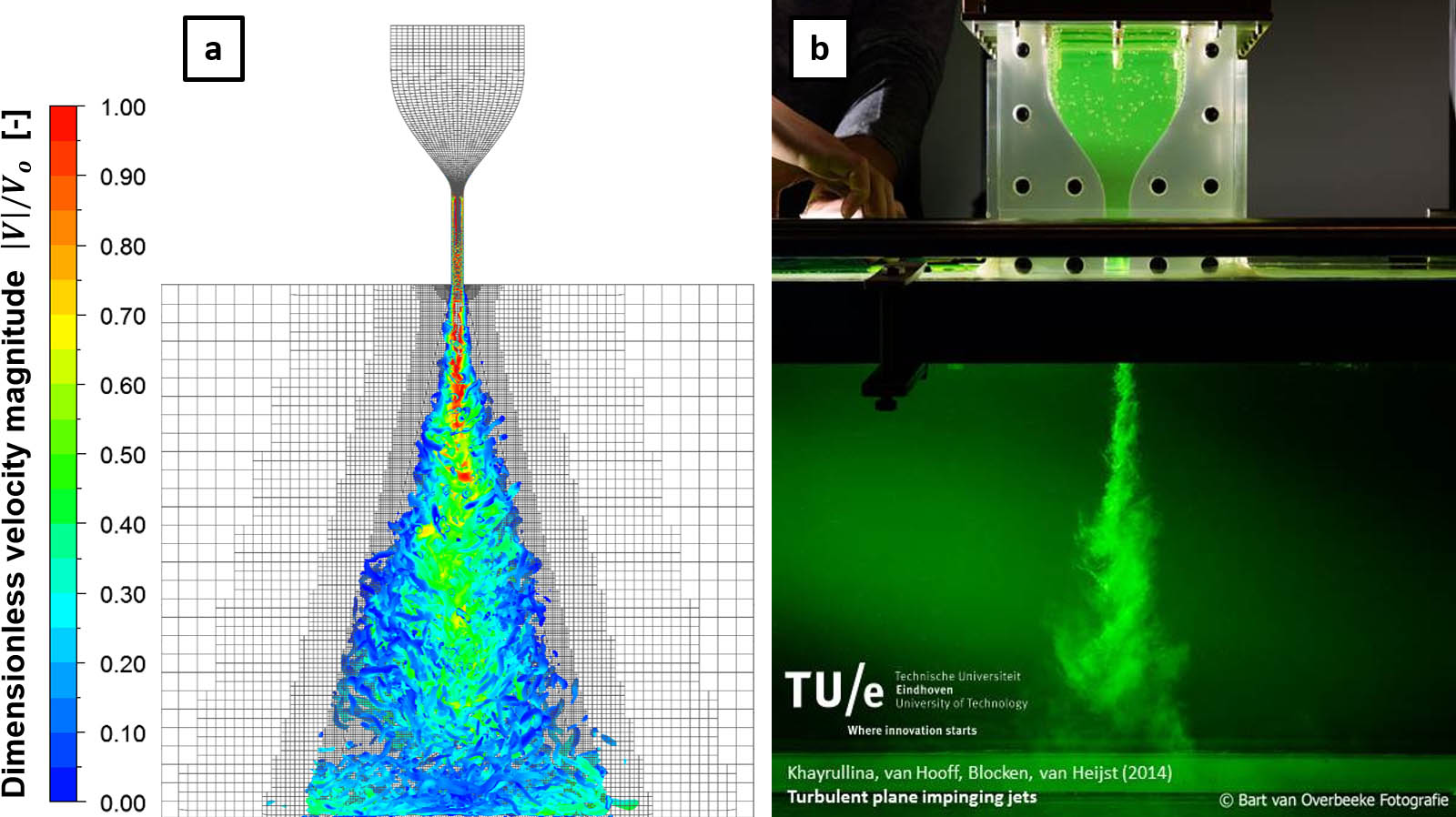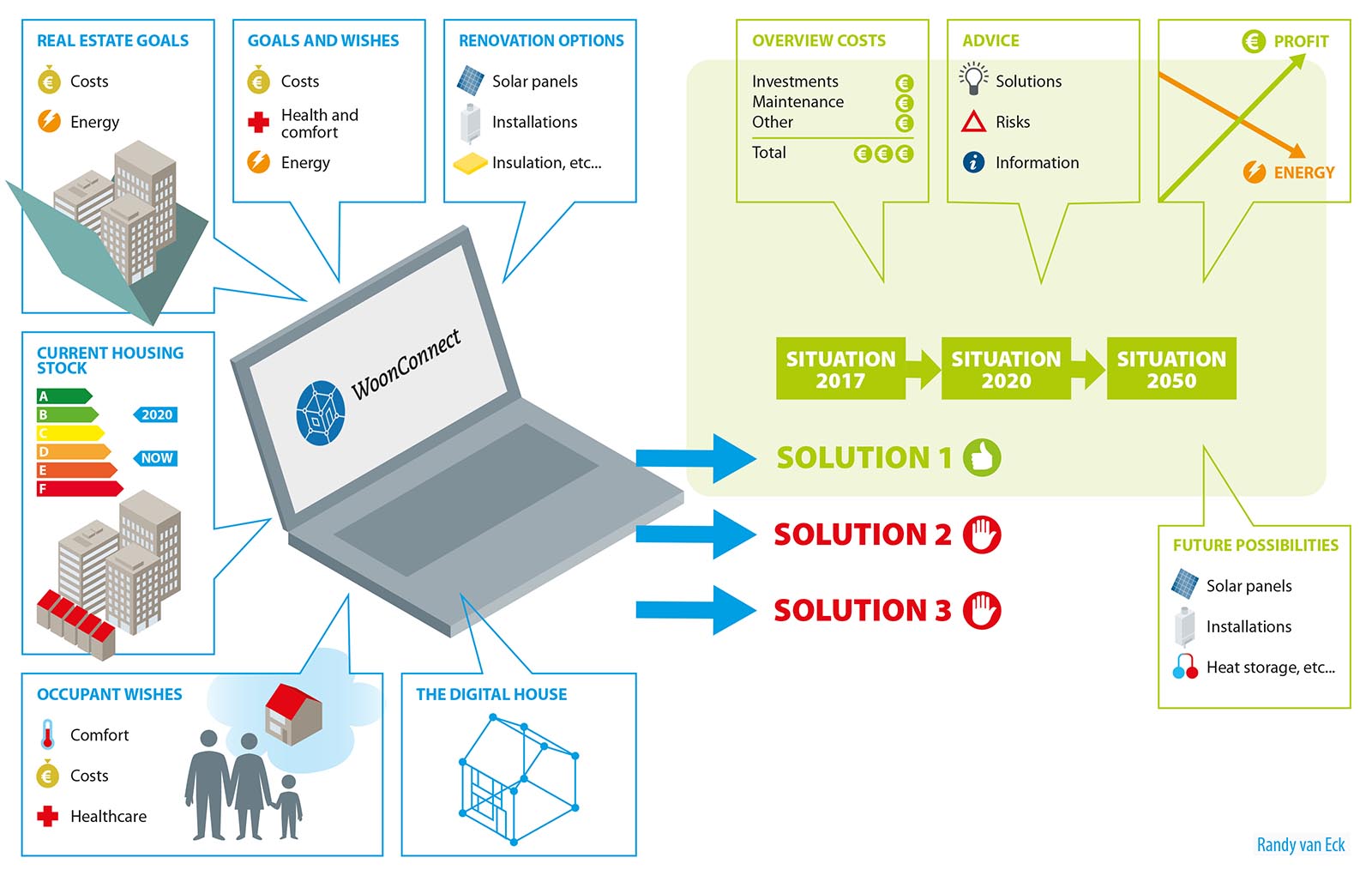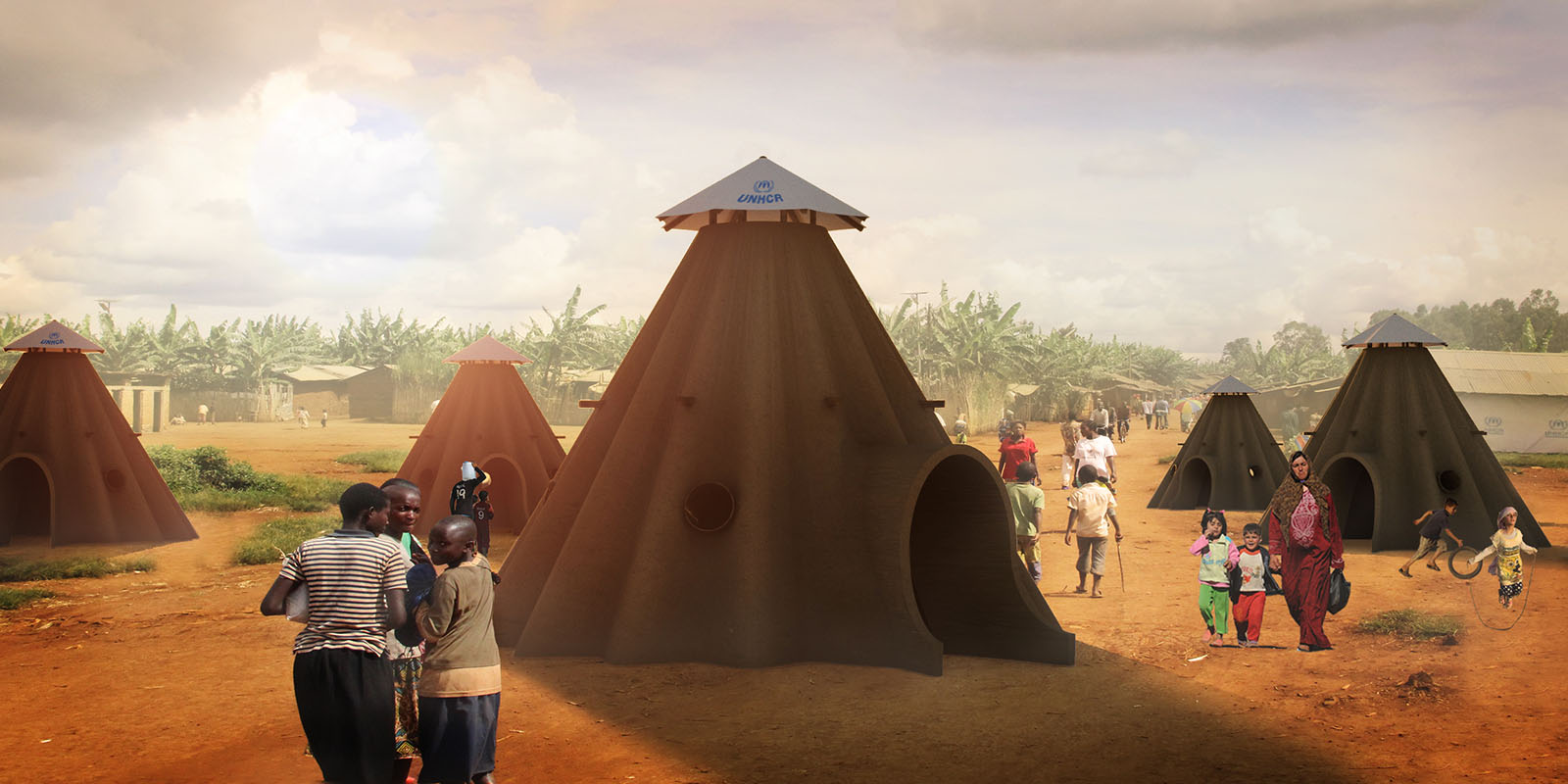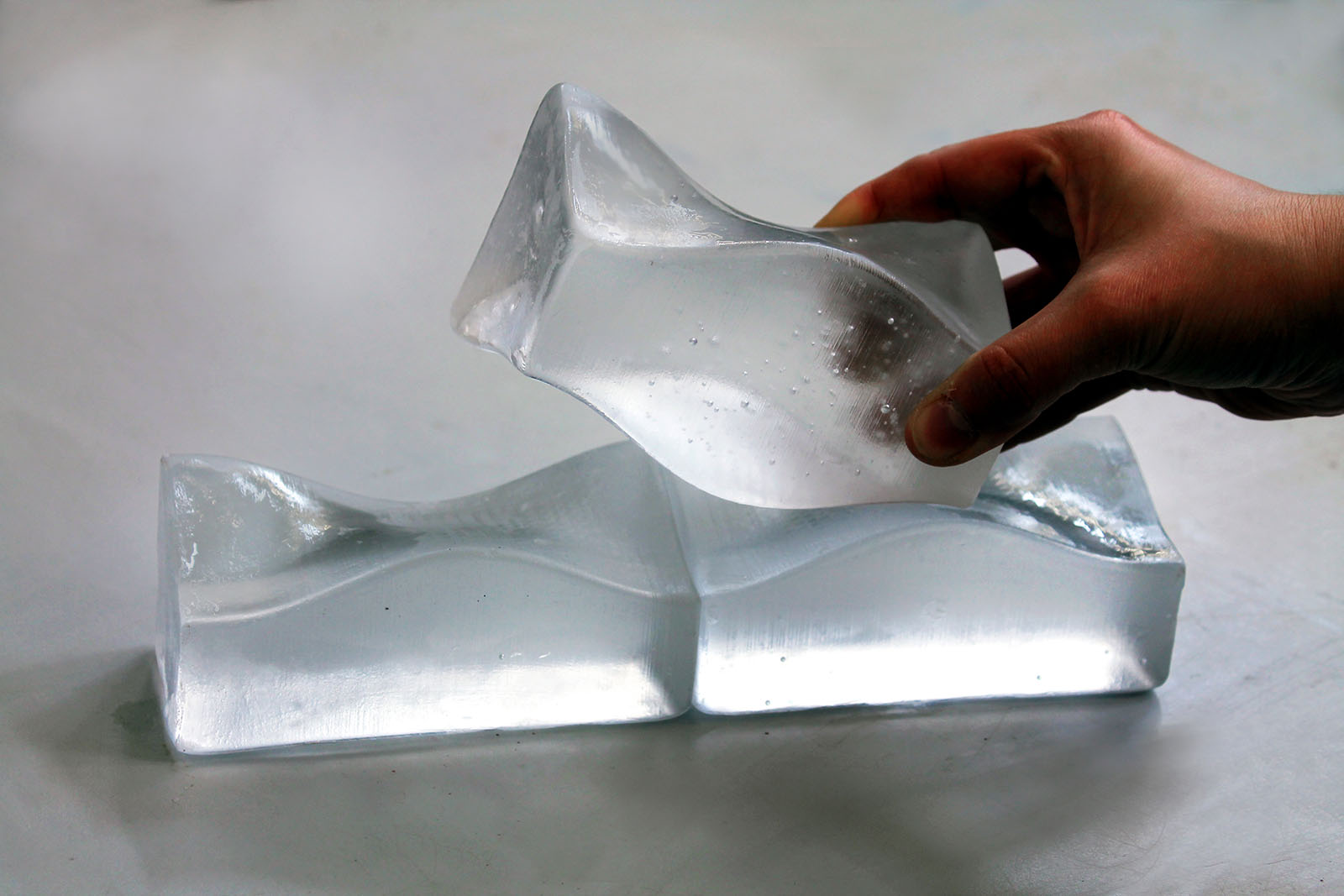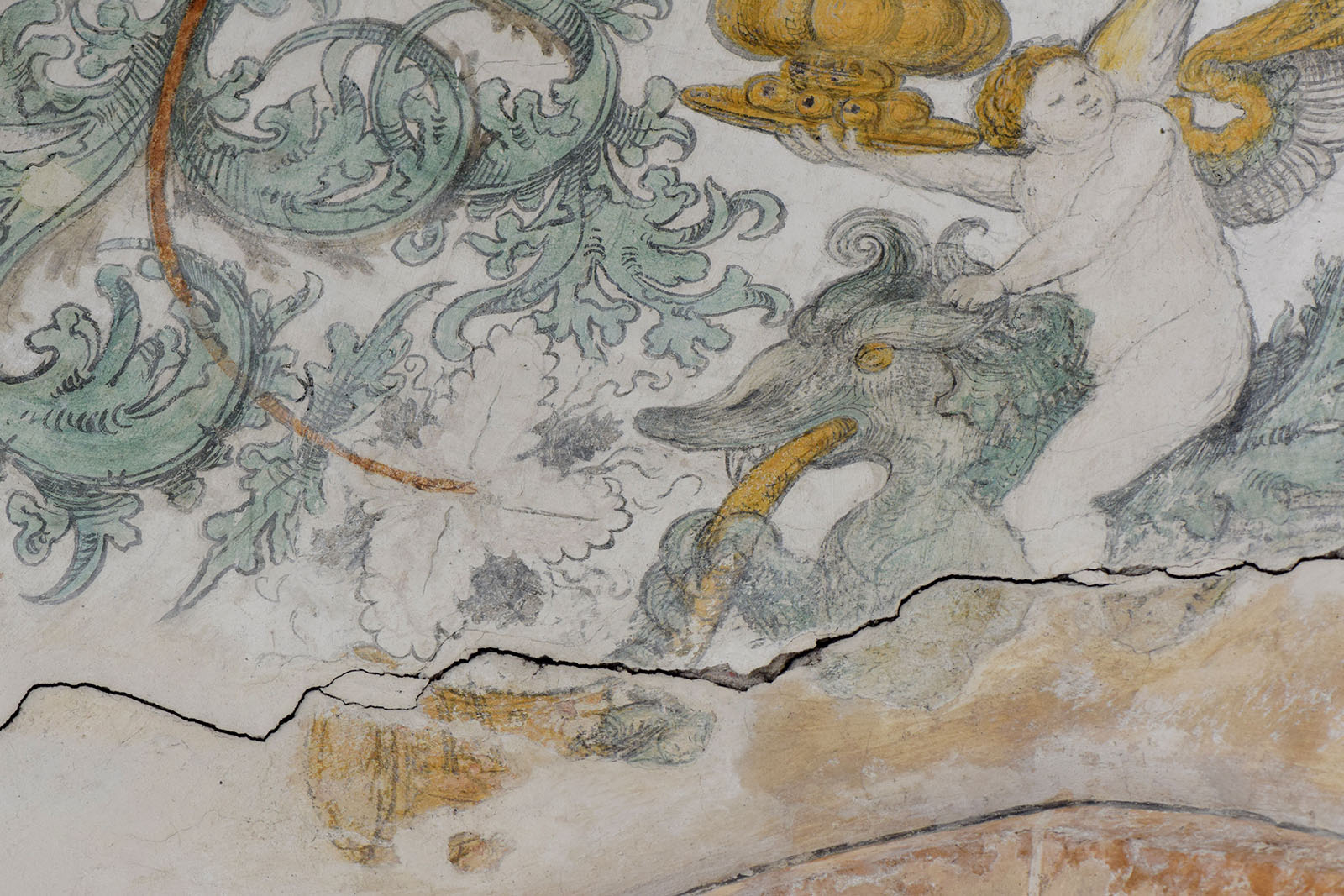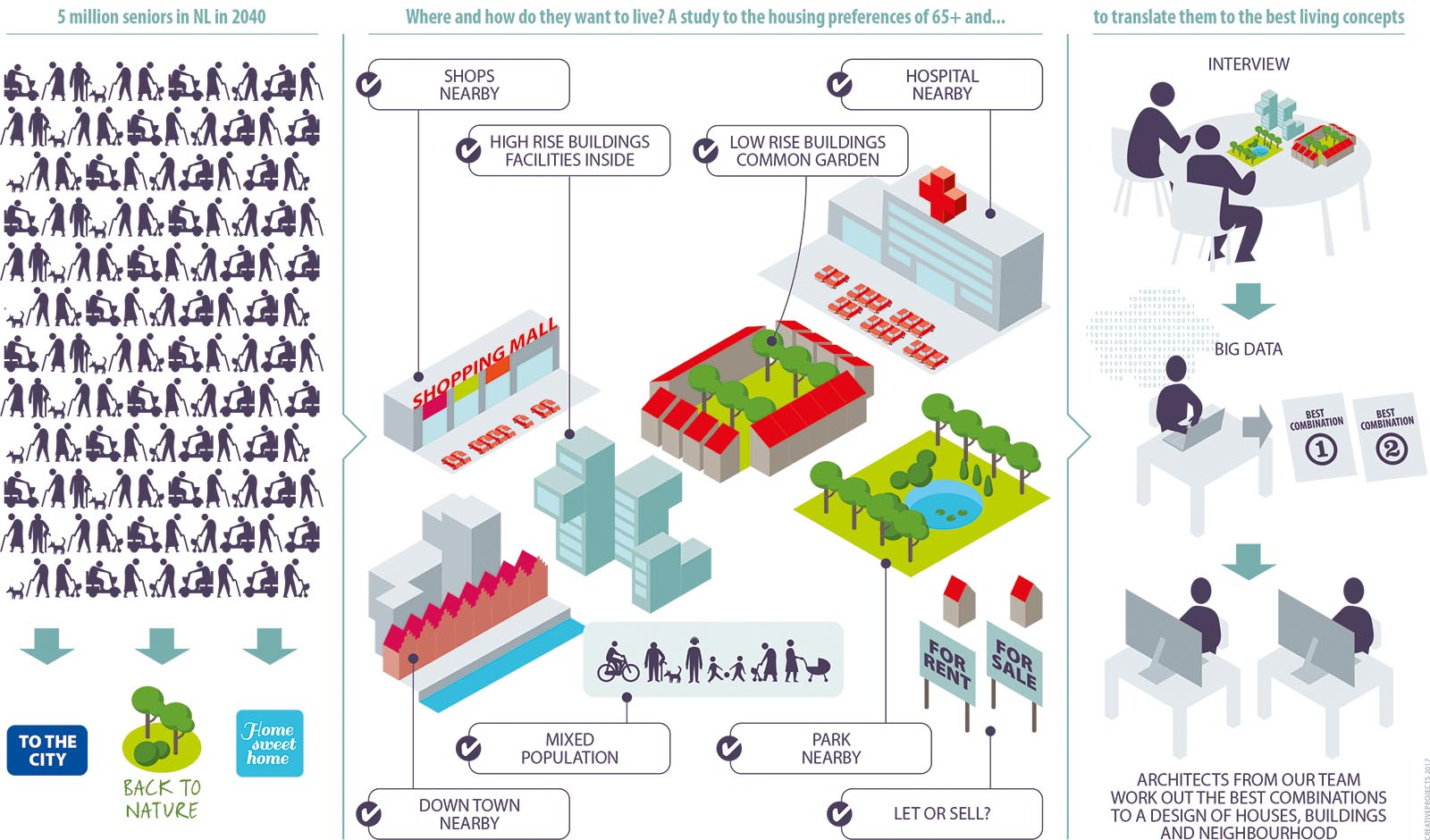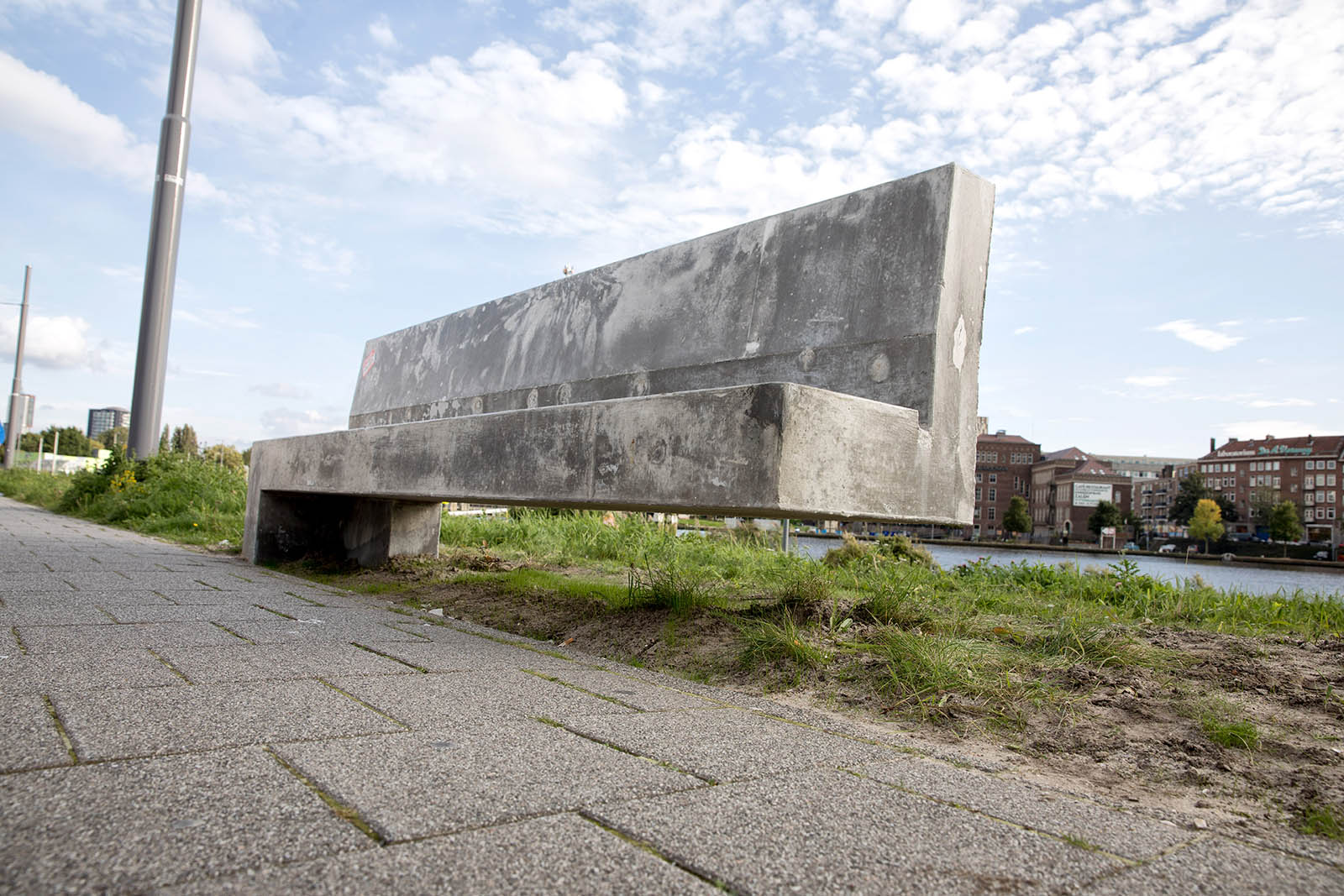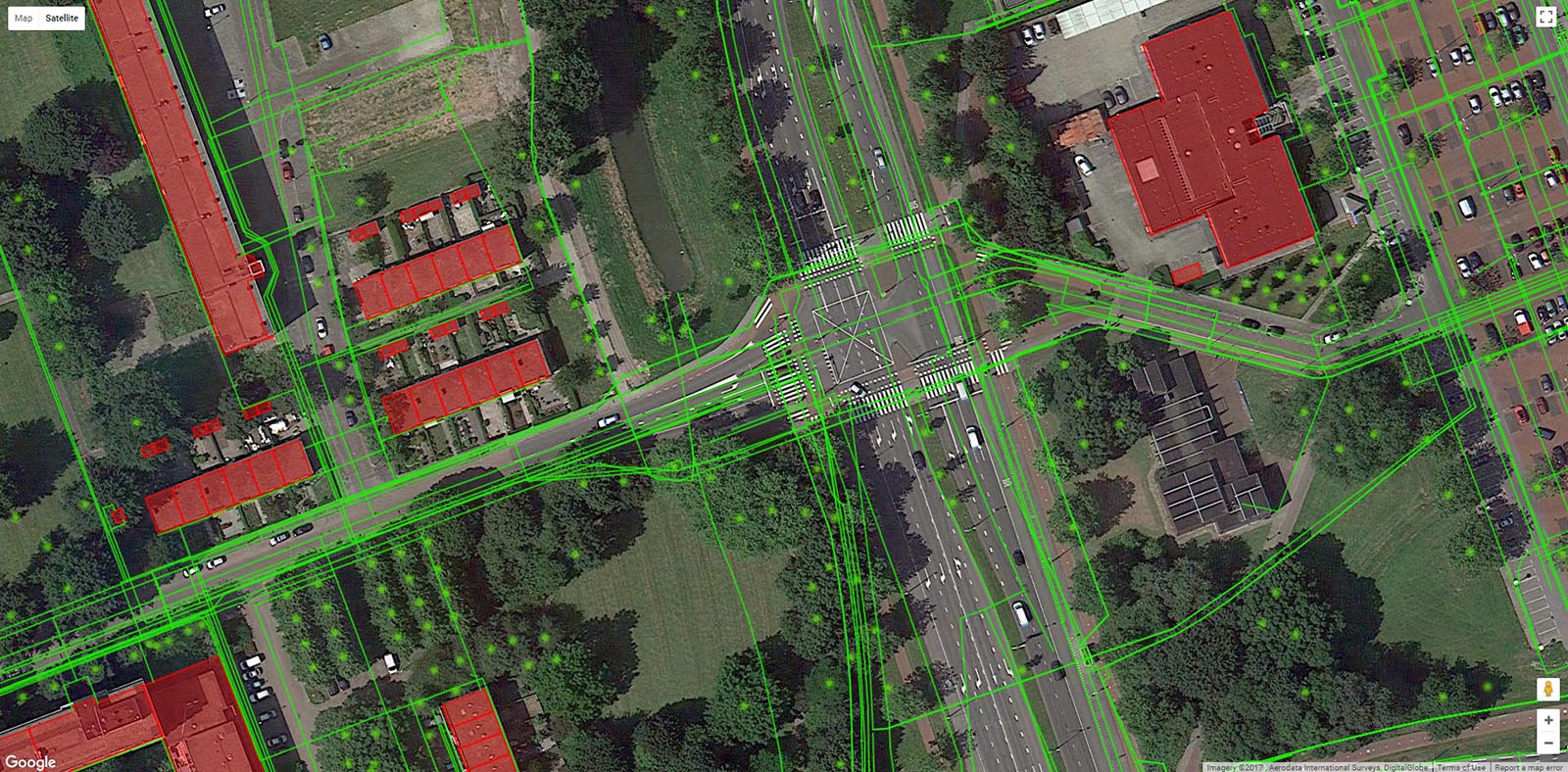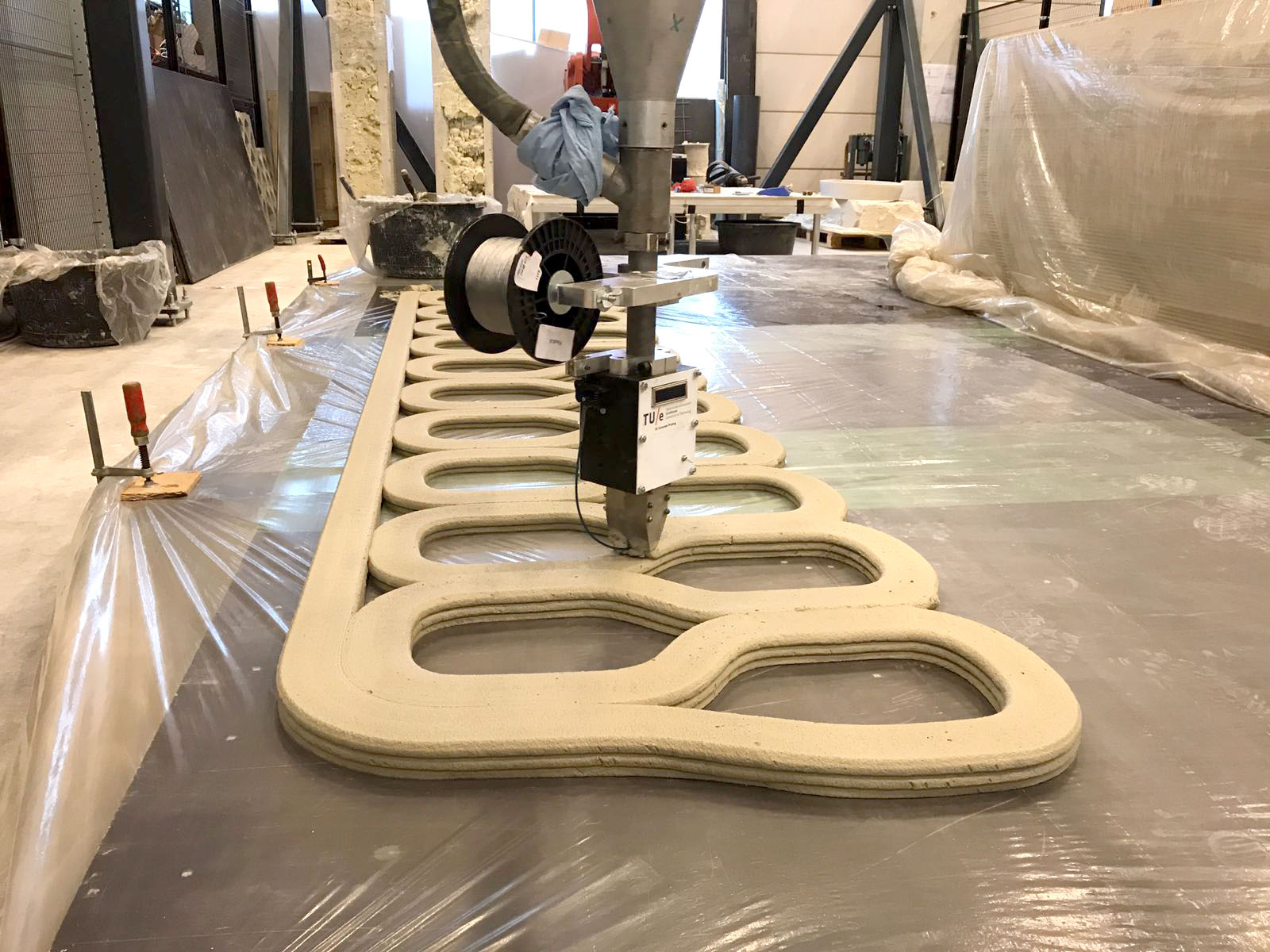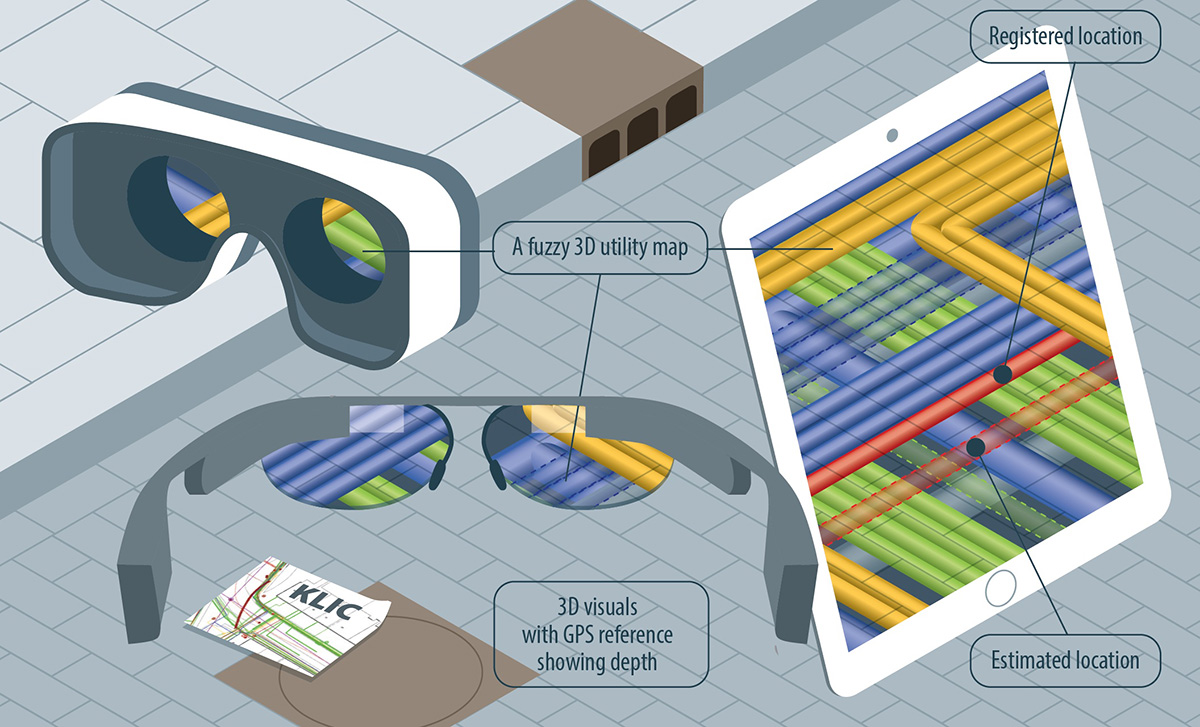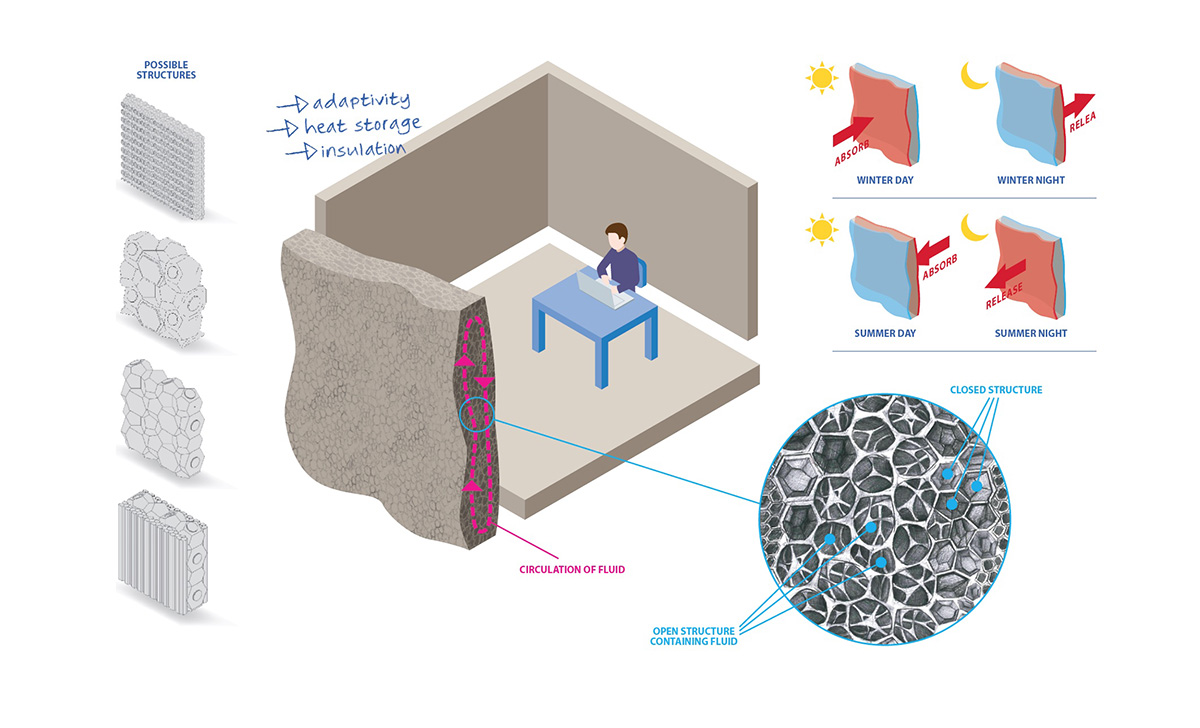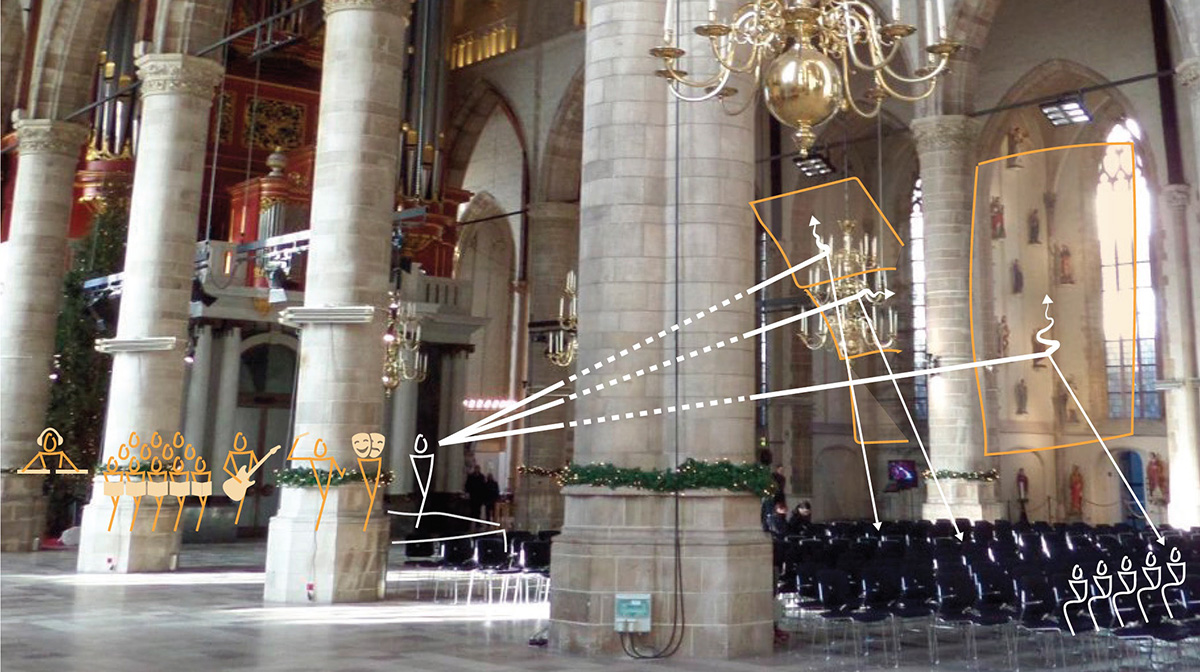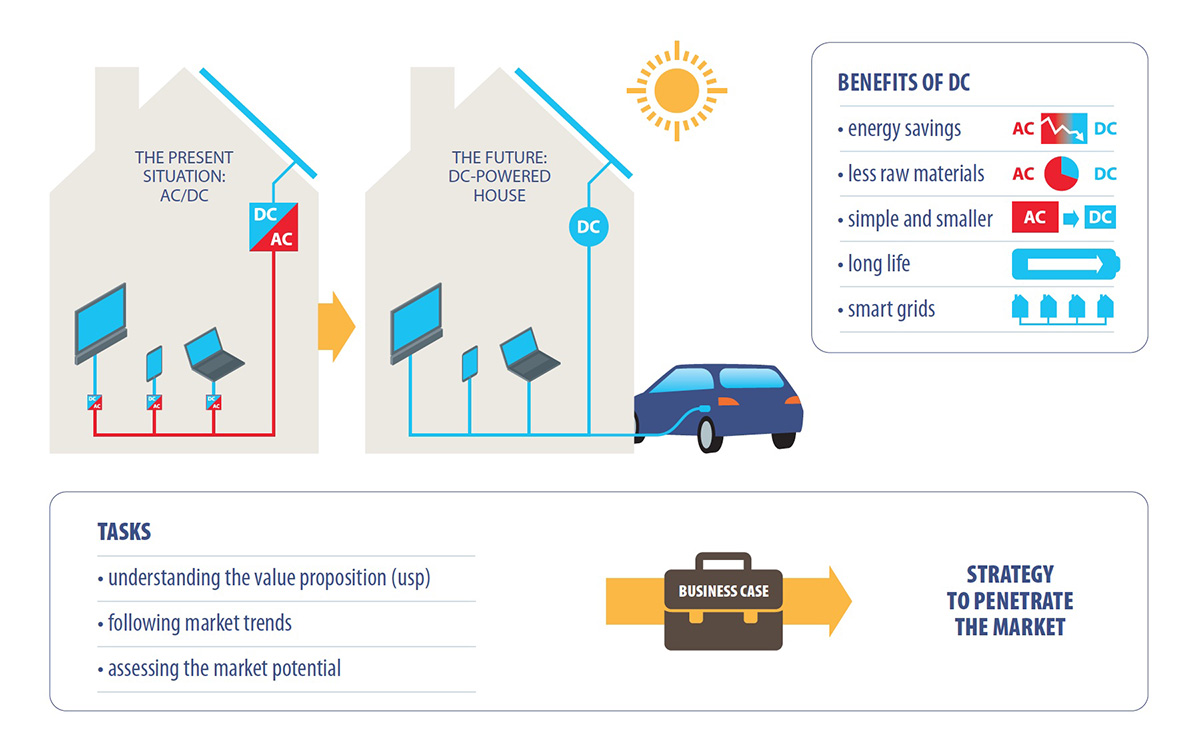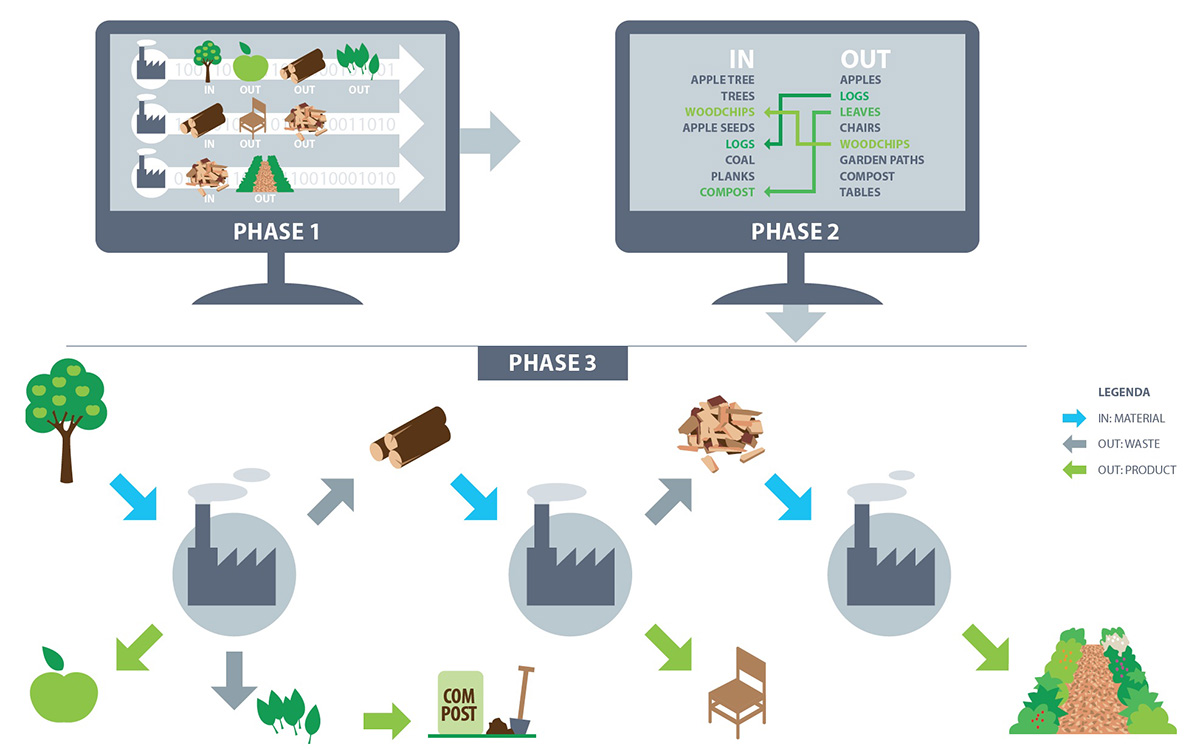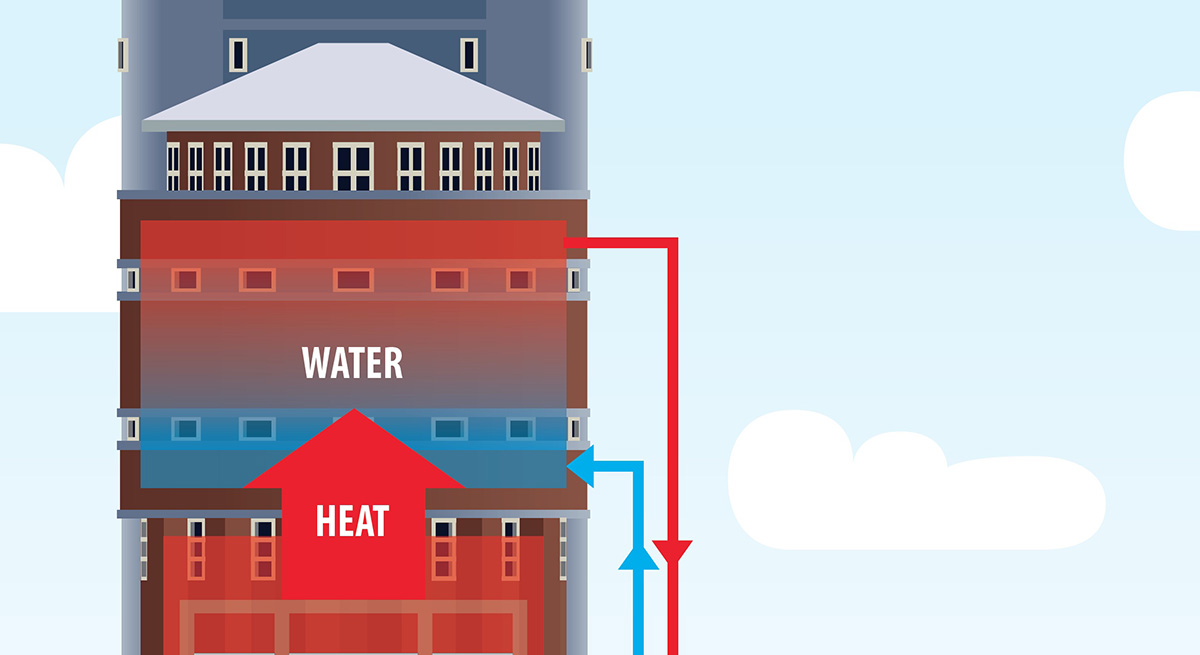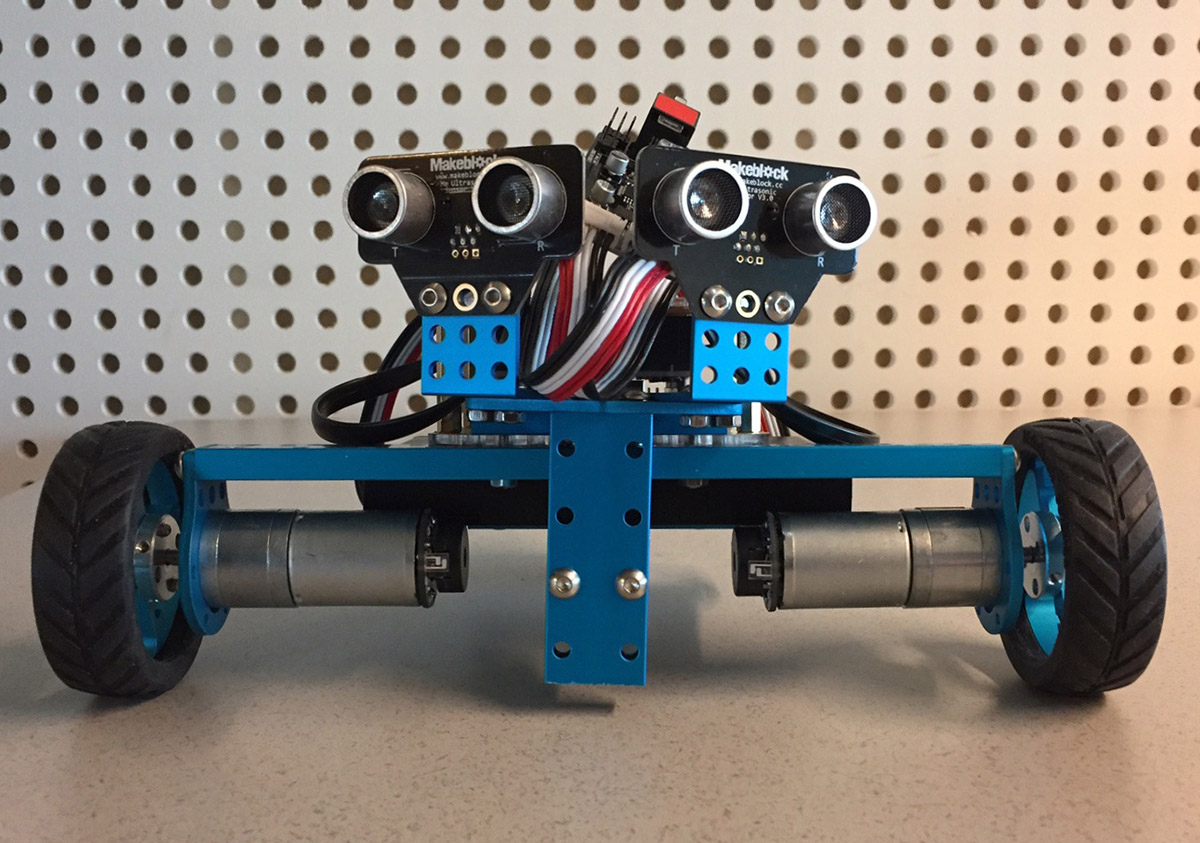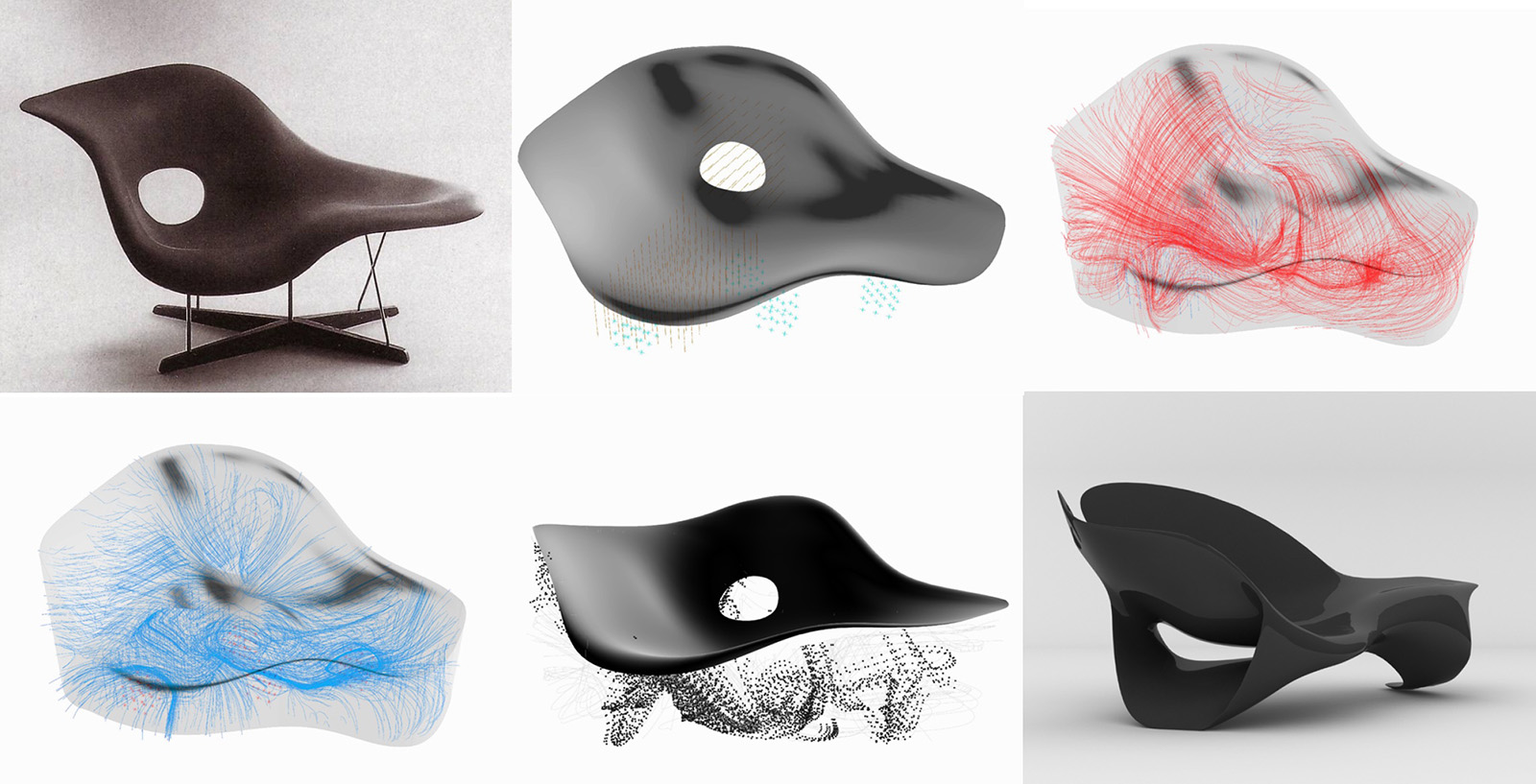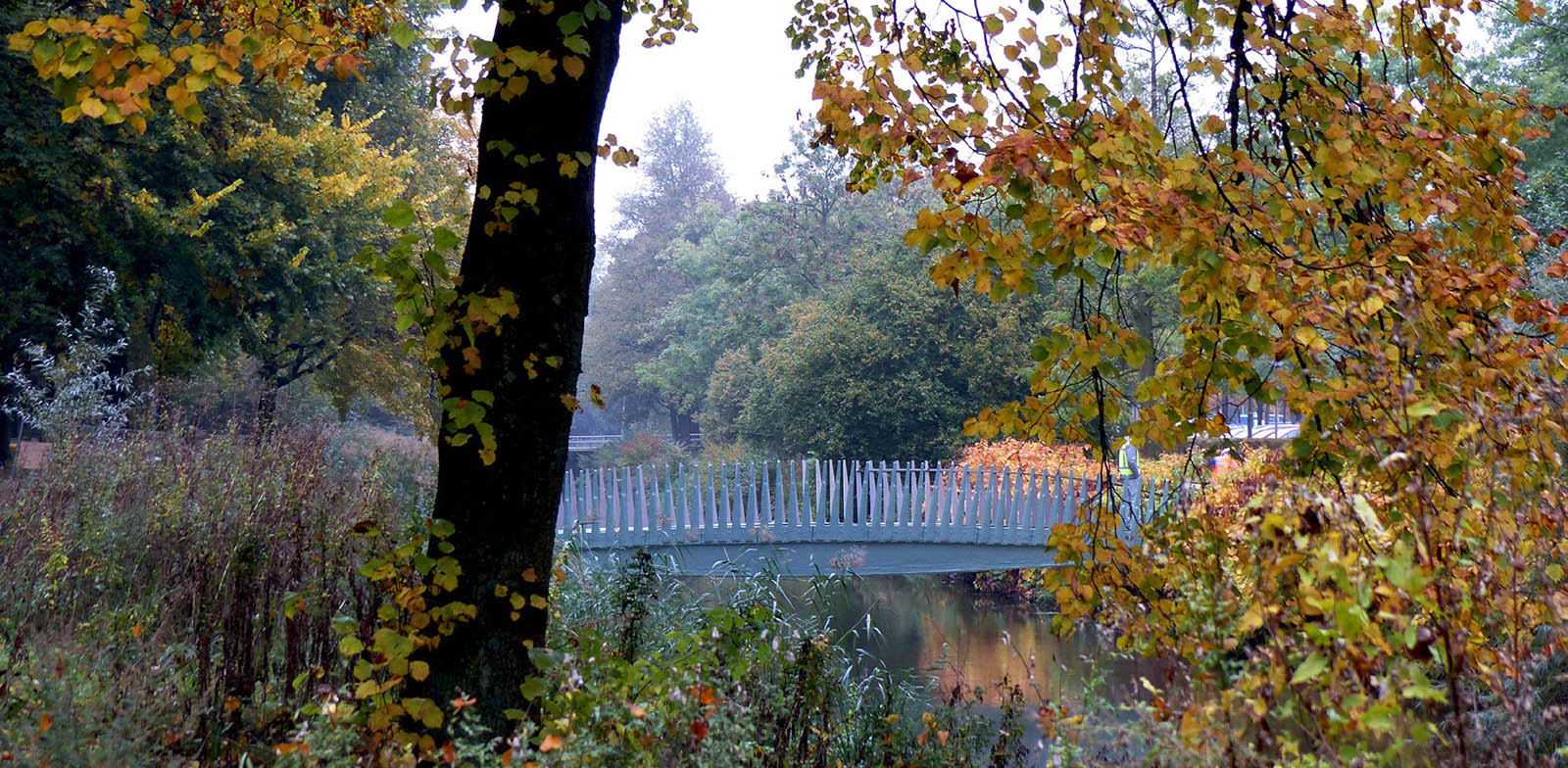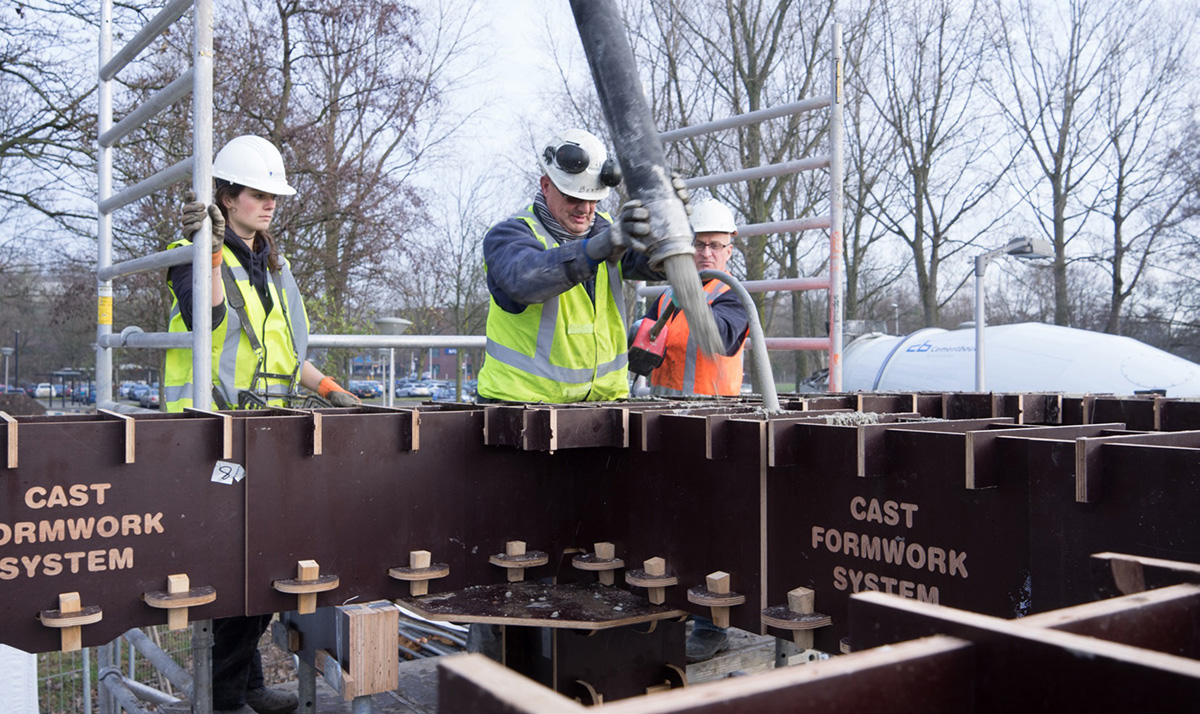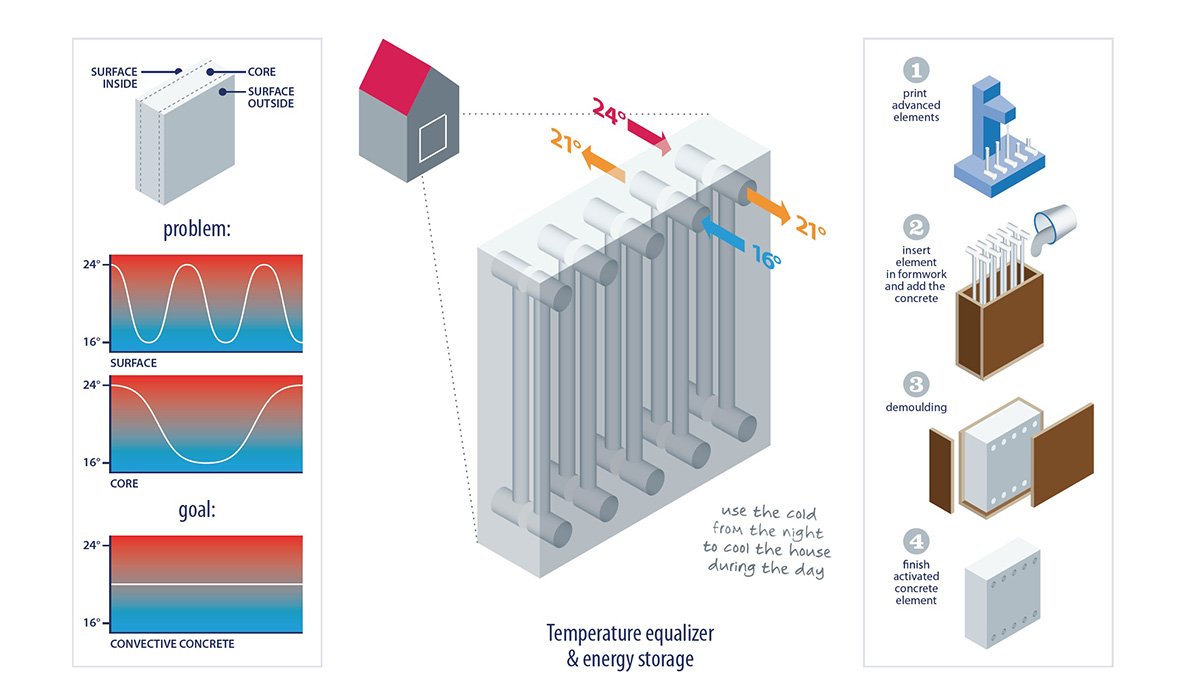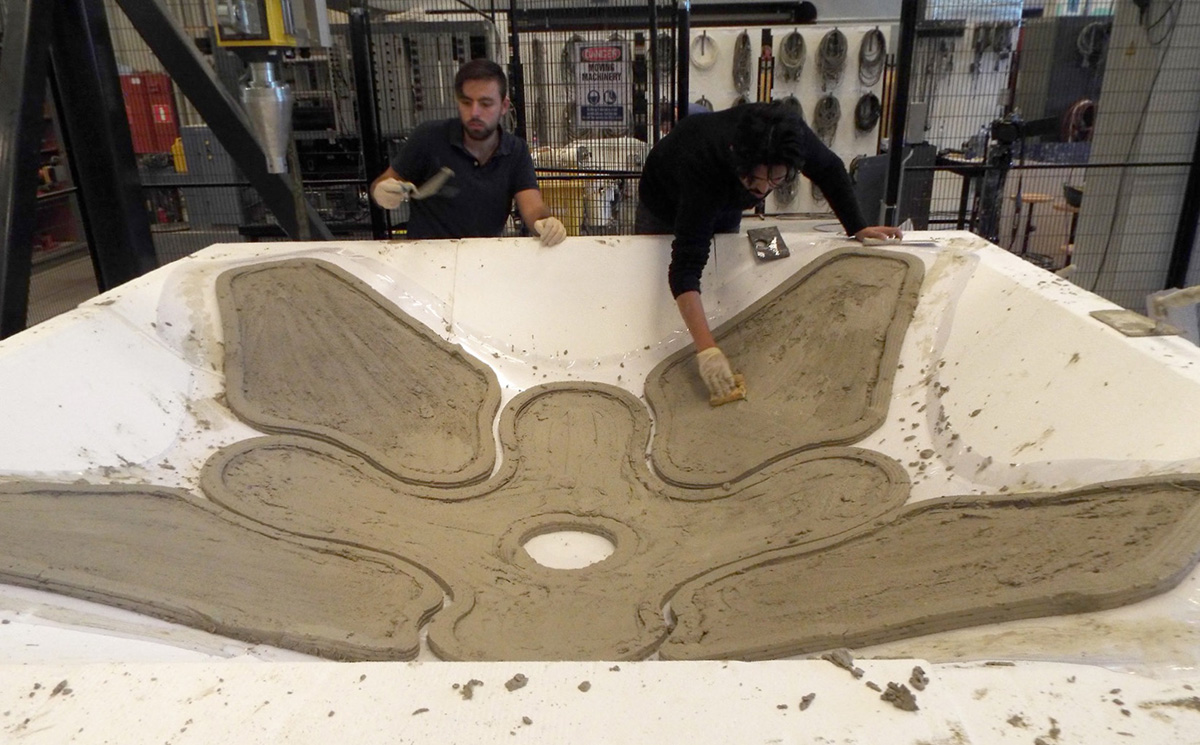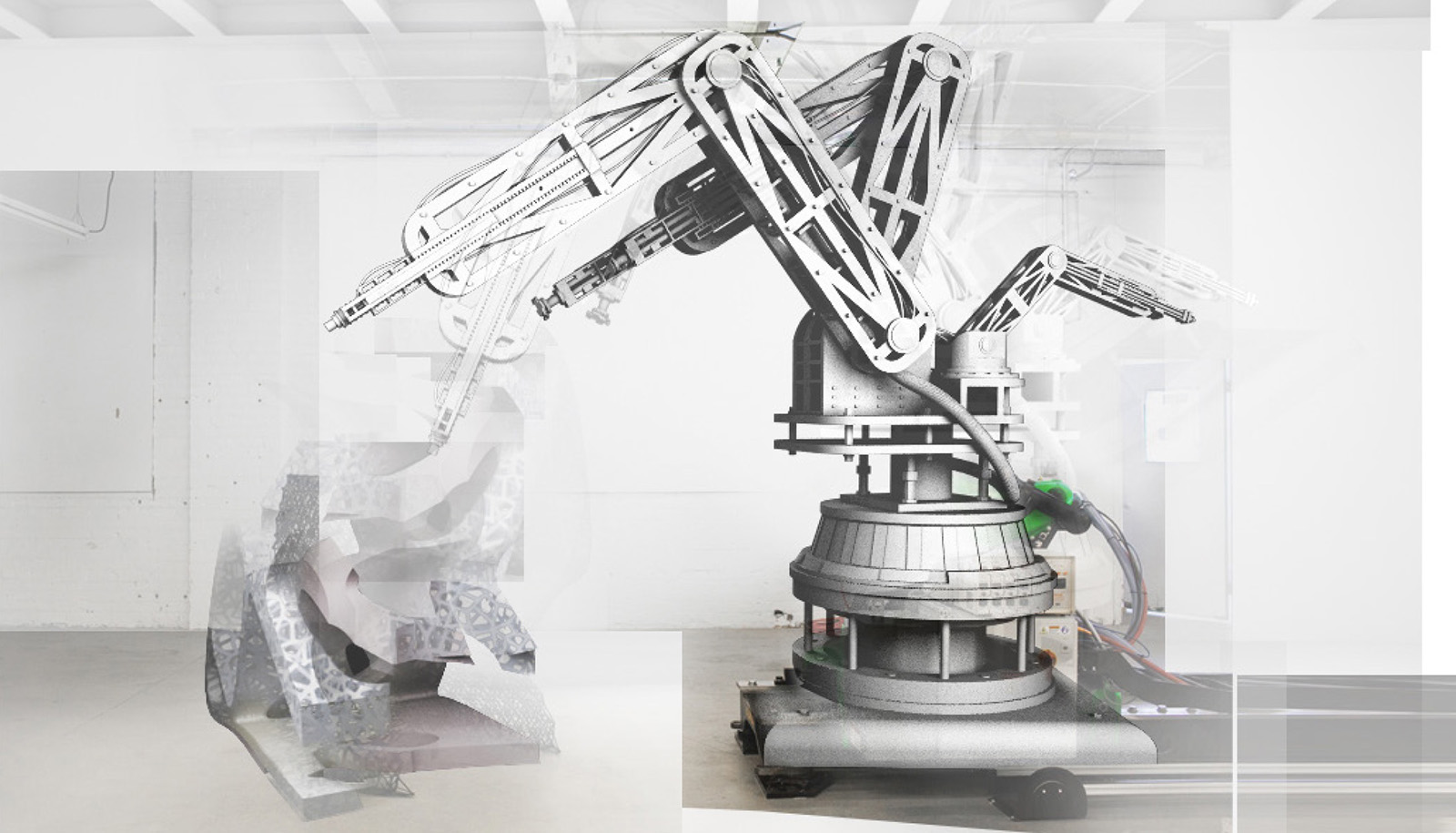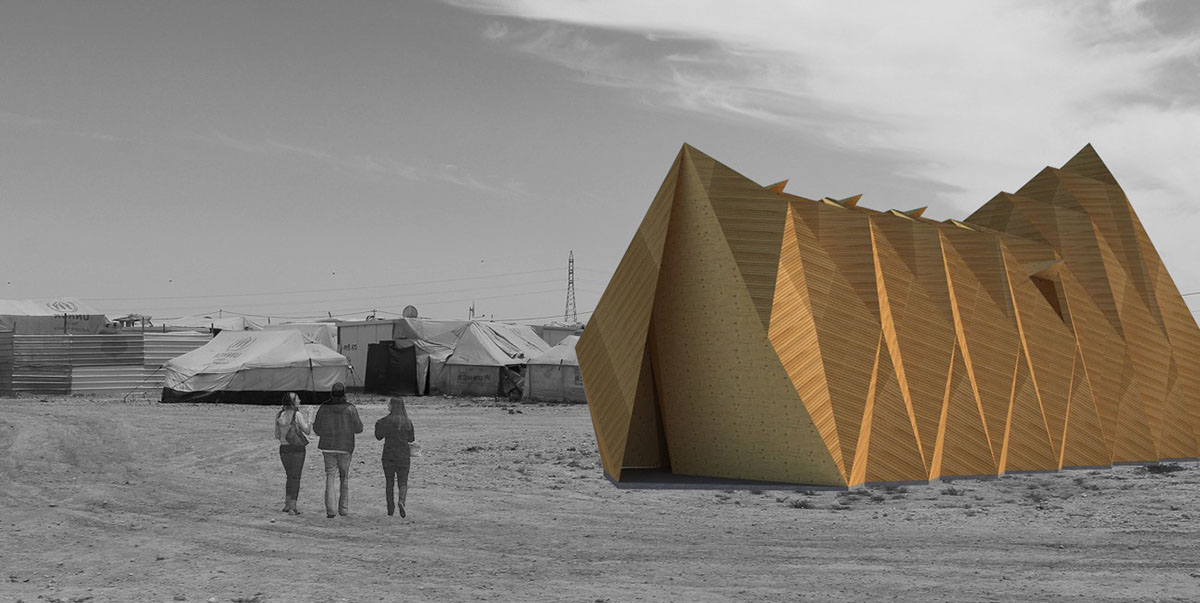Energy Innovation
All Items
-
By designing materials with variable stiffness, structures can adapt to various functional requirements. This paper presents variable stiffness explored in two case studies relying on an architected material approach that involved gradient pattern differentiation and freeform printing using thermoplastic polymers (TPE).
The differentiated cell pattern had gradients from high to low density of cells, which facilitate variable stiffness. Numerical and experimental studies showed the potential for application of materials with variable stiffness in adaptive structures.
-
The term “impinging jet” refers to a high-velocity fluid stream that is ejected from a nozzle, a narrow opening or an orifice, and which impinges on a surface. As applied to the built environment, impinging jets are used in air curtains to separate two environments subjected to different environmental conditions with the purpose of improving thermal comfort, air quality, energy efficiency and fire protection in buildings. The design and application of state-of-the-art air curtains requires detailed knowledge of the relationship between the separation efficiency of air curtains—their main...
-
With natural resources depleting, sustainable solutions are becoming more and more a necessity. To deal with the depleting resources, the Dutch government aims to generate 14% of country’s energy consumption through natural resources by 2020. The Dutch built environment is estimated to be responsible for 38.1% of the total energy consumption. This means that investments and innovation within this area have high potential.
However, there are some indications that these goals cannot be met. New houses often meet these requirements but, with a growth of 0.8% per year, these only...
-
In recent years, natural disaster and military conflicts forced vast numbers of people to flee their home countries, contributing to the migration crisis we are facing today. According to the UNHCR, the number of forcibly displaced people worldwide reached the highest level since World War II. Post-disaster housing is by nature diverse and dynamic, having to satisfy unique socio-cultural and economical requirements. Currently, however, housing emergencies are tackled inefficiently. Post-disaster housing strategies are characterized by a high economic impact and waste production, and a...
-
The applicability of glass in structures is continuously ascending, as the transparency and high compressive strength of the material render it the optimum choice for realizing diaphanous structural components that allow for light transmittance and space continuity. The fabrication boundaries of the material are constantly stretching: visible metal connections are minimized and glass surfaces are maximized, resulting to pure all-glass structures. Still, due to the prevalence of the float glass industry, all-glass structures are currently confined to the limited forms and shapes that can...
-
Additive Manufacturing (commonly known as 3D printing) technology has become a global phenomenon. In the domain of heritage, 3D printing is seen as a time and cost efficient method for restoring vulnerable architectural structures. The technology can also provide an opportunity to reproduce missing or destroyed cultural heritage, in the cases of conflicts or environmental threats. This project takes the Hippolytuskerk in the Dutch village of Middelstum, as a case study to explore the limits of the existing technology, and the challenges of 3D printing of cultural heritage. Architectural...
-
In developed countries, the share of the elderly (65+) is growing quickly. In the Netherlands it might reach 25 to 30% of the population by 2040 (see Figure 1). We design best living concepts for the elderly, based on a research in their residential preferences. Our novel methodology combines insights from social sciences and architecture. A stated choice experiment retrieves the willingness-to-pay of the elderly for a set of relevant attributes of the dwelling, building and location. The attributes with the highest valuation are used as an input for a flexible architectural...
-
The sustainability of infrastructure projects is becoming increasingly important issue in engineering practice. This means that in the future the construction materials will be selected on the basis of the contribution they can make to reach sustainability requirements. Geopolymers are materials based on by-products from industries. By using geopolymer concrete technology it is possible to reduce our waste and to produce concrete in the environmental-friendly way. An 80% or greater reduction of greenhouse gases compared with Ordinary Portland Cement (OPC) can be achieved through...
-
Excavation work takes place almost continually in most cities around the Western hemisphere. Many cities are already full of infrastructures, buried networks, and street furniture, so excavation work is not without any thread to the operator and surrounding environment. Small construction sites, for example, are often constrained by operating infrastructure on surface level and underground. Although different agencies and network owners have information about the location of the objects that put excavation work at risk, this information is not centralized. Different organizations manage...
-
Recent years have seen a rapid growth of additive manufacturing methods for concrete construction. Potential advantages include reduced material use and cost, reduced labor, mass customization and CO2 footprint reduction. None of these methods, however, has yet been able to produce additively manufactured concrete with material properties suitable for structural applications, i.e. ductility and (flexural) tensile strength. In order to make additive manufacturing viable as a production method for structural concrete, a quality leap had to be made. In the project ‘3D Concrete Printing for...
-
Spool has published previously four issues dedicated to projects, developed in a high-risk innovation programme: the so-called the 4TU.BOUW lighthouse projects. Initially, the main topic of this programme was Energy-Innovation, hence the name of this “thread”. This issue of Spool presents the last batch of Lighthouse projects as the programme came to a close.
-
Spying the Underground refers to the buried utilities that are often hidden from the eyes of citizens and city engineers. Since they are difficult to localize and measure from street level, utility plans are the only models that convey geometry information about them. Nowadays, Augmented Reality (AR) techniques allow us to display three-dimensional (3D) virtual utility models over a surface level camera image. To achieve this, 3D information needs to be added to existing utility models. Therefore, we developed a data model that allows storage of depth and geometry information. Based on...
-
Spong3D is an adaptive 3D printed facade system that integrates multiple functions to optimize thermal performances according to the different environmental conditions throughout the year. The proposed system incorporates air cavities to provide thermal insulation and a movable liquid (water plus additives) to provide heat storage where and whenever needed. The air cavities have various dimensions and are located in the inner part of the system. The movable liquid provides heat storage as it flows through channels located along the outer surfaces of the system (on the indoor and outdoor...
-
Monumental buildings are demolished when they lose their traditional function. These historical monuments can be maintained by repurposing them for modern use, like lectures and musical events. This results in a demand for different acoustic conditions. However, monuments are subject to strict building intervention regulations; any intervention concerning changes to the original elements are often prohibited. This creates a demand for demountable and adaptable product design, repurposing monumental buildings by alleviating acoustical problems without distorting the view towards the...
-
Our electricity is predominantly powered by alternating current (AC), ever since the War of Currents ended in the favor of Nicola Tesla at the end of the 19th century. However, lots of the appliances we use, such as electronics and lights with light-emitting diode (LED) technology, work internally on direct current (DC) and it is projected that the number of these appliances will increase in the near future. Another contributor to the increase in DC consumption is the ongoing electrification of mobility (Electric Vehicles (EVs)). At the same time, photovoltaics (PV) generate DC voltages,...
-
Bedrijven gaan tegenwoordig vooral lineair om met hun materialen. Grondstoffen komen binnen, worden verwerkt tot producten en hun afval wordt afgevoerd. Binnen één bedrijf ziet dit er logisch uit, maar in een systeem van meerdere bedrijven is te zien dat dit efficiënter kan. Als het afval van een bedrijf gebruikt zou worden als grondstof door een ander bedrijf, ontstaat er industriële symbiose. Daardoor worden er minder grondstoffen verbruikt en worden bruikbare restmaterialen niet verspild.
Om bedrijven te helpen bij het zoeken naar partners voor zulke uitwisselingen, is de...
-
The water tower of Schimmert was built in 1926 to cover the needs of water of Schimmert and the surrounding areas as well. This imposing 38 meters high tower dwarfs any nearby buildings, providing a 360° view of the surrounding area and deserves its pseudonym de Reus van Schimmert (the Giant of Schimmert). In the attempt to find a sustainable business model for the iconic building the concept of installing a data center in its core is investigated. The waste heat from the servers will be transferred to the reservoir on the top and from there used to power a district heating system in...
-
3D printing techniques for the building industry are developing fast. Concepts like Contour printing, concrete printing concepts of the TU/E and D Shape are examples. Despite the range of techniques is broad (and vary from a large gantry system, to a supersized Delta printer for example), many of the developed 3D printing machines are constraint in their movement. Mobile 3D printers however show advantages in flexibility, as they can move outside the constraint of a large 3D printer and they can move in the highly unstructured and hazardous environment of the building site, which can be...
-
The project is an inter-disciplinary initiative for the ‘designed engineering’ of heterogeneous fibres with variable material behaviors to create real-time responsive interior environments (furniture systems). These smart furniture systems will embody properties of real-time adaptive temperature control, real-time structural adaptability and real-time physiological support of the human body. These properties shall be fully self-regulated (devoid of external power sources) via engineering multi-layered fibre compositions, which can sense the forces exerted by the human body and...
-
The project aims to design, produce and realise a small, but fully bio-based composite pedestrian bridge at the campus of TU/e. So far, few bio-based building projects have been realised world-wide, but they focussed either on non-structural elements or they partially used building materials based on fossil materials.
The application of bio-based materials in the built environment is an extremely promising approach towards a more circular economy and a sustainable environment, which is one of the National Science Agenda’s themes: “Energy and raw materials: Circular economy”....
-
CAST Formwork Systems (CFS) is a concrete formwork system based on CNC milling technology. It enables self-construction in informal areas to build up safe, incremental housing up to four storeys high. Ordinary formwork systems are complex to use, often too expensive for the low- to mid-low income group and only suited to one shape of building plot. The CFS-system is not only cheaper, it can be customized to all shapes of building-plots and is both safe and easier in use.
-
Convective Concrete is about a research-driven design process of an innovative thermal mass concept. The goal is to improve building energy efficiency and comfort levels by addressing some of the shortcomings of conventional building slabs with high thermal storage capacity. Such heavyweight constructions tend to have a slow response time and do not make use of the available thermal mass effectively. Convective Concrete explores new ways of using thermal mass in buildings more intelligently. To accomplish this ondemand charging of thermal mass, a network of ducts and fans is embedded in...
-
It is no secret that there have been some great advances in the realm of concrete additive manufacturing. However, one of the major drawbacks of this fabrication technique is that the elements must be self-supporting during printing. While most other additive manufacturing materials can overcome this by using a secondary printed support structure, alternative strategies have to be developed for materials such as concrete.
This 4TU project explores the possibilities of combining concrete additive manufacturing with a temporary support surface. By printing on a free-form surface,...
-
The application of new Computer Aided Manufacturing (CAM), digital fabrication and additive manufacturing techniques in the construction industries is expected to bring major change to these industries. Driven by a foreseen reduction of construction time and labor cost, simplification of logistics and an increase of constructible geometrical freedom, many experiments are performed both at academia and in practice.
Beyond these economical and architectural objectives, digital fabrication in construction can be used to reduce the environmental footprint of the industry. The...
-
At this moment in history, a staggering 60 million refugees rely on international help - the highest number of displaced persons ever. A large variety of solutions have been developed that cater for primary needs. However, long-term public and community facilities have been neglected.
This project is addressing the necessity of dignifying community facilities in the context of permanent temporariness in refugee camps. Twelve plans for public buildings are developed, each with a different program. During the coming spring, certain parts of these projects will be built in scale...
